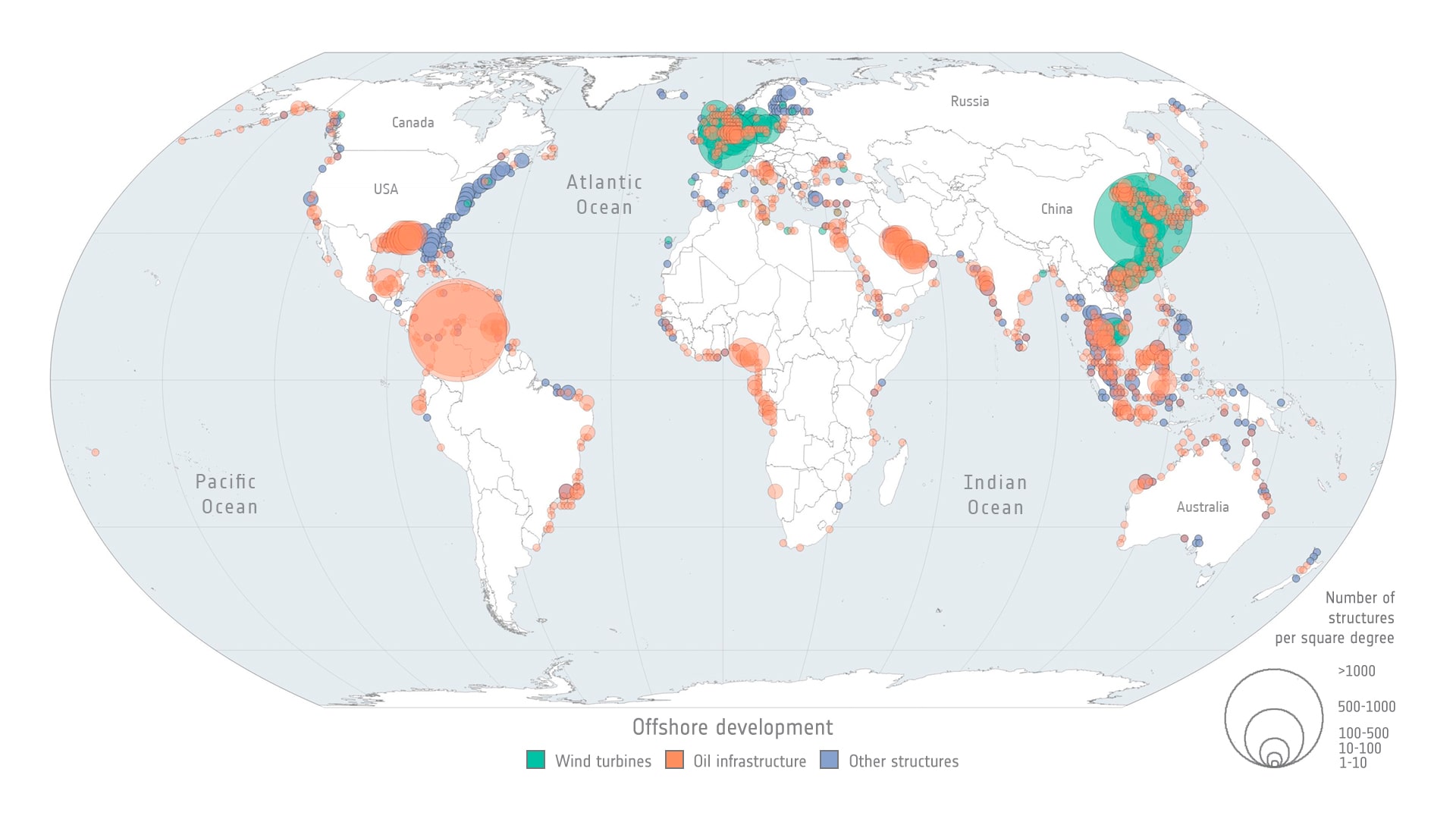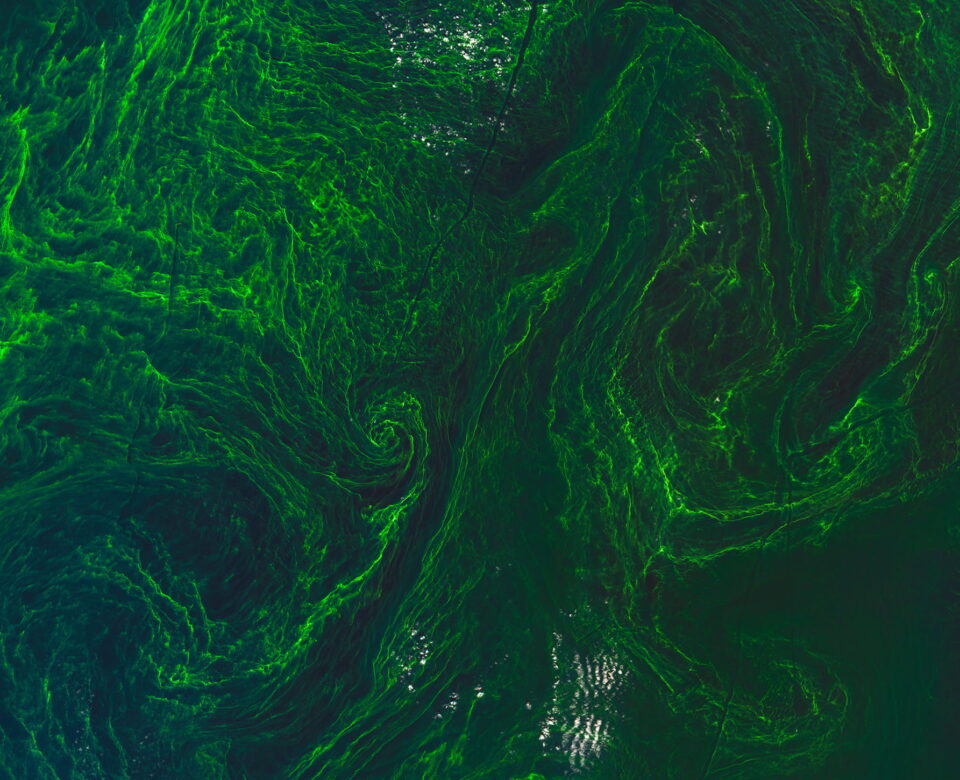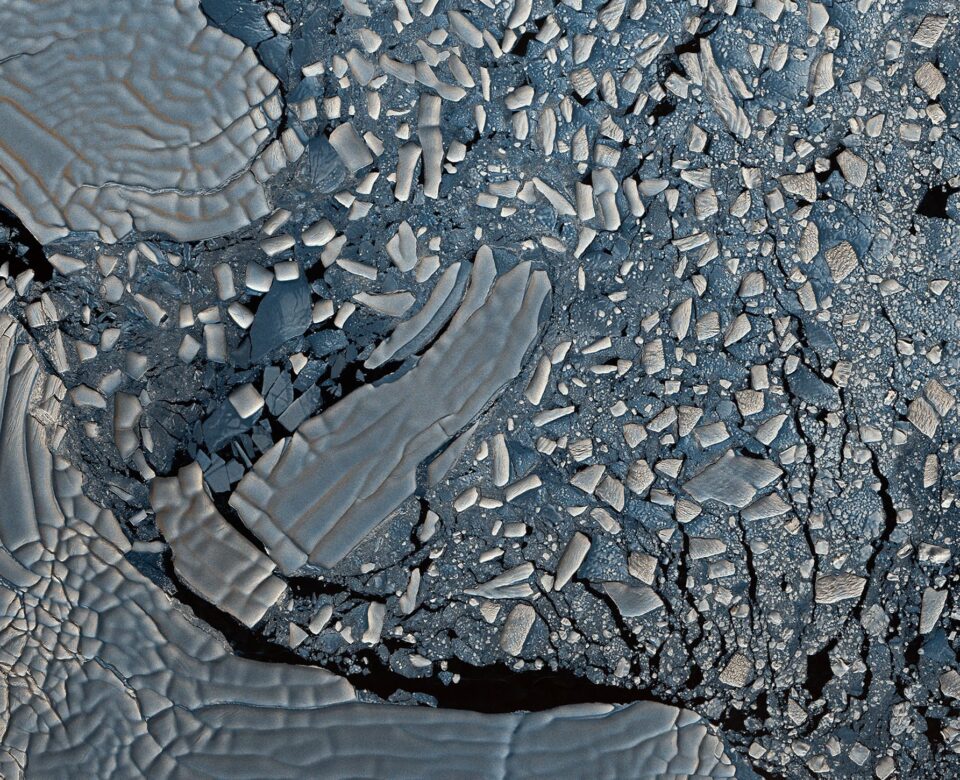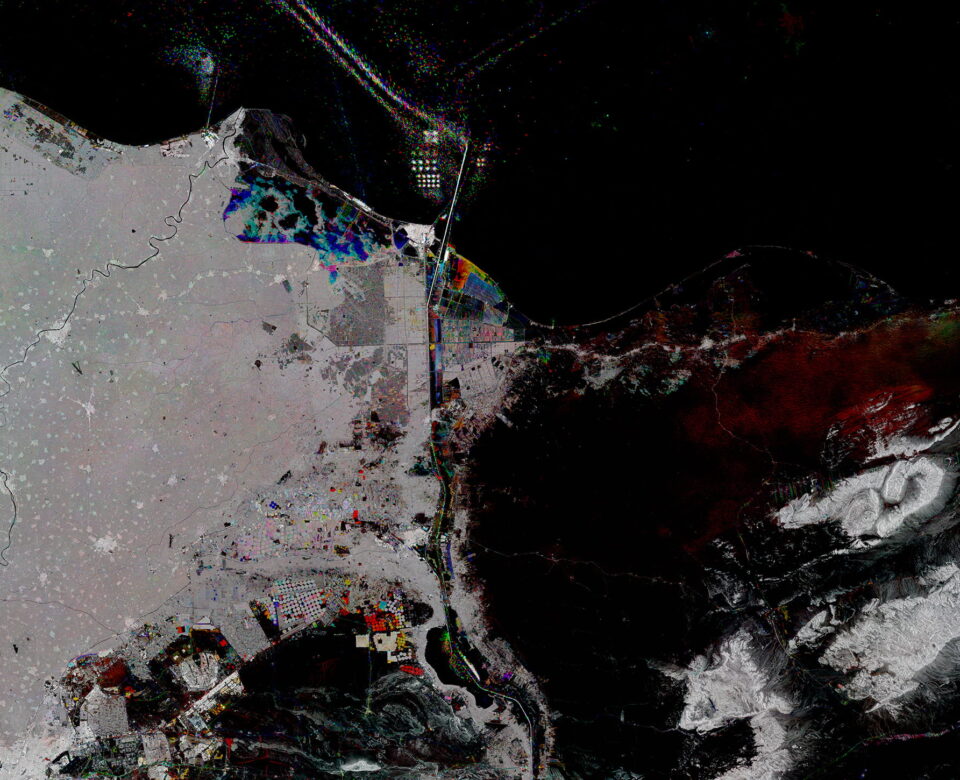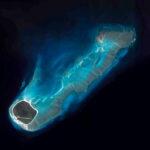
Safe Havens
March 13, 2024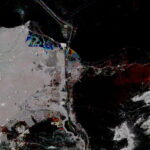
The Ocean in Motion
March 13, 2024The Ocean's
Clean Power
Rotterdam and the North Sea
Rotterdam and part of the Zeeland province in southwest Netherlands are featured in this radar image acquired by Copernicus Sentinel-1. The coloured dots in the North Sea are ships. Their colours indicate when they were captured by the satellite. The white dots on the left are offshore wind farms.
© Sentinel-1, Copernicus, ESA
The ocean offers abundant sources of renewable energy, such as wind, wave, tidal, and thermal. Satellites help assess the potential and performance of these technologies, as well as their environmental and social impacts.
A groundbreaking study that combines Copernicus Sentinel-1 satellite data and Artificial Intelligence looked at offshore infrastructures around the world, such as wind turbines and oil platforms. During the 2017–2021 study period, oil structures increased by 16% and wind turbines more than doubled. By 2021, turbines outnumbered oil platforms.
© ESA (data source: Paolo et al., 2024/Global Fishing Watch)

Simonetta di Pippo
Director
Space Economy Evolution Lab - SDA Bocconi
Earth observation aids in planning offshore renewable energy projects, aligning with the European Green Deal. Space boosts maritime efficiency and safety, leading to a more sustainable future. Innovation in space unlocks economic opportunities, protects our oceans, and ensures future generations a greener planet.

Giorgio Liccardi
Earth observation scientist
Agenzia spaziale italiana - ASI
